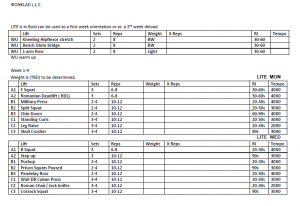A lot of information is written about varying subjects in the field of athletics and a lot of vocabulary has come out– too often a principal or an idea is renamed. Sometimes I think it is to create a type of gimmick and expound on old information or to try to shed light on old information. Often it is an old gift wrapped in new paper. Kind of like Einstein’s relativity thought experiment, two different people see lightening striking a train. These things are usually a matter of perspective.
Not too long ago I heard about muscles that were referred to as torque converters. Many years back, I was exposed to the idea of stabilizer muscles and their ability to hinder a person’s performance due to their lack of strength. Prior to this information, appeared the idea of weak decelerators and around the same time something called a strength deficit, which was known as structural balance, and is now talked about as the mobility and stability trade off.
Before circuits there were complexes and after circuits there were WODs. There was muscular endurance training which turned into met cons. What will replace met cons?
There are also techniques and courses that bare a striking similarity to gua sha therapy. Another course is similar to cryokinesis, but without the ice. There are old exercises that have been reinvented with new names. There are old techniques that have been re-envisioned and marketed under new basturdized versions of the same thing. I am not saying all the “new” gimmicks or ideas are bad; in some cases they may have subtle differences that make them superior. After all, a rose by any other name would smell as sweet unless of course it’s not a rose, it’s something someone has redefined as a rose.
Just be careful, keep an eye open, and an ear to the ground, because with new old ideas come neophyte herd behavior and with neophytes dogma. What can be gained from this rant? Hopefully, a new-found cynicism for man to embellish old ideas. Just remember the old saying, “familiarity breeds contempt,” so embellish for this seems to be the zeitgeist we live in.
